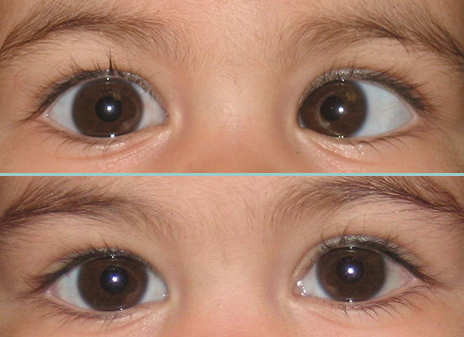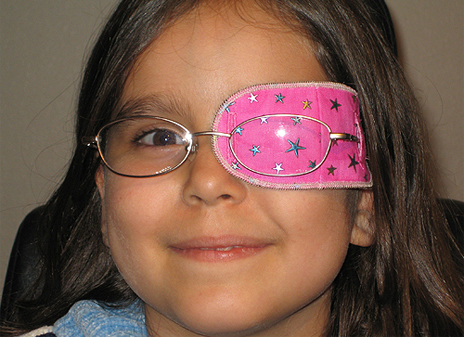Lazy Eye & Crossed Eyes
What is Lazy Eye?
Vision problems are common in children. Early recognition and treatment are the keys to preventing permanent visual impairment. Let us begin by defining two important terms: amblyopia and strabismus.
Amblyopia, sometimes referred to as “lazy eye,” is poor vision in an eye that did not develop normal sight during childhood. Without treatment, children with amblyopia will never see well in one eye, even with glasses.
Strabismus is a misalignment of the eyes. The eyes may cross or drift up or out. Strabismus may be present from birth or may develop in childhood.
Dispelling the Myths
It is important to dispel two common misconceptions about visual development in children:
Children do not outgrow crossing of the eyes. Many parents have been told that their child would outgrow this condition, which is simply not true. It is normal for the eyes of a newborn to cross or drift out. However, after four months of age, the eyes should be straight at all times.
Not all lazy eyes are crossed. Some children with amblyopia have crossed eyes, while others have perfectly straight eyes. In children with crossed eyes, one eye is usually “turned off” by the brain to avoid double vision. The ignored eye fails to develop fully, and amblyopia develops. In children with straight eyes, amblyopia is usually the result of one eye being more farsighted than the other. The brain ignores the images from the more farsighted eye and amblyopia results. Children can develop amblyopia between birth and seven years of age.
Detection and Diagnosis
Amblyopia can be more difficult to detect than strabismus. Many children with amblyopia show no obvious sign of a vision problem, since they use the normal eye to see and ignore the other. For this reason, early vision testing by your pediatrician or eye doctor is essential.
Amblyopia is detected during an eye exam by finding a difference in the vision between the two eyes.
Strabismus is usually recognized as a crossing or drifting out of one or both eyes. The drifting may be constant or intermittent.
Treatment
Fortunately, most children with amblyopia and strabismus can be treated effectively.

Treatment of Amblyopia
In order to correct amblyopia, the brain must be reconditioned to pay attention to images from the lazy eye. This is accomplished by part-time patching treatment or by the use of Atropine eye drops that blur the vision of the stronger eye. Patching or blurring the stronger eye forces the brain to use the lazy (amblyopic) eye and over time, the vision of the weaker eye improves.
Treatment of Strabismus
Strabismus can sometimes be treated with glasses, but often requires eye muscle surgery. Eye muscle surgery is performed under general anesthesia on an outpatient basis, and takes less than an hour to complete. During the procedure, the eye muscles are carefully re-positioned to straighten the eyes. Children are usually back to school within three days after surgery.
Learn more about eye muscle surgery by clicking here: eye muscle surgery
Your Child's Vision

Amblyopia
What is Lazy Eye? Vision problems are common in children. Early recognition and treatment are the keys to preventing permanent visual impairment.




